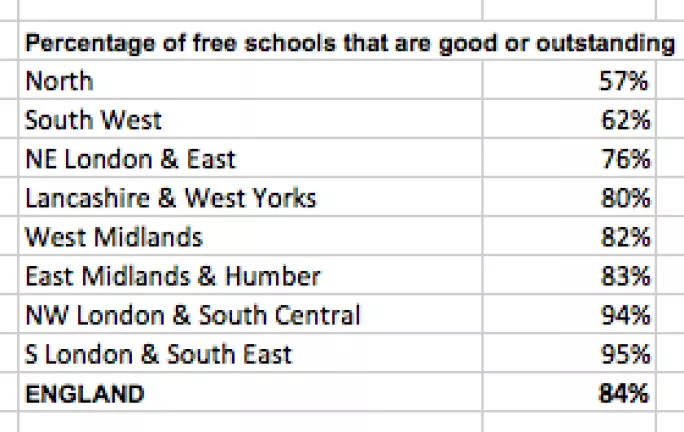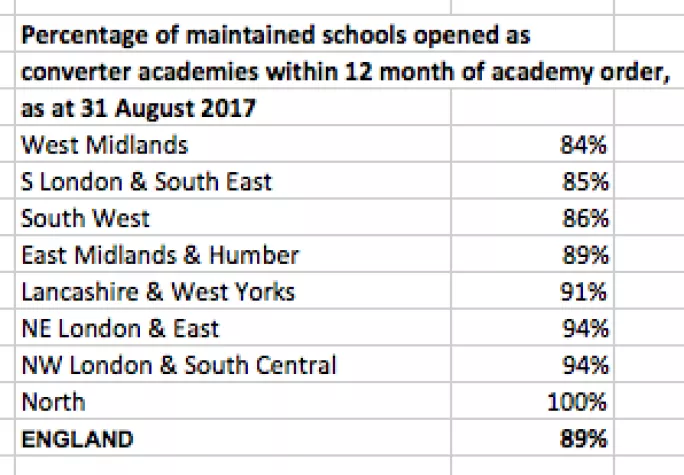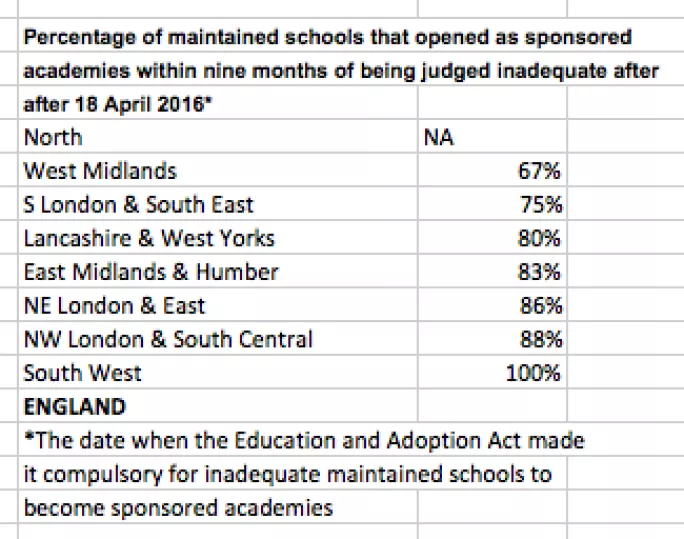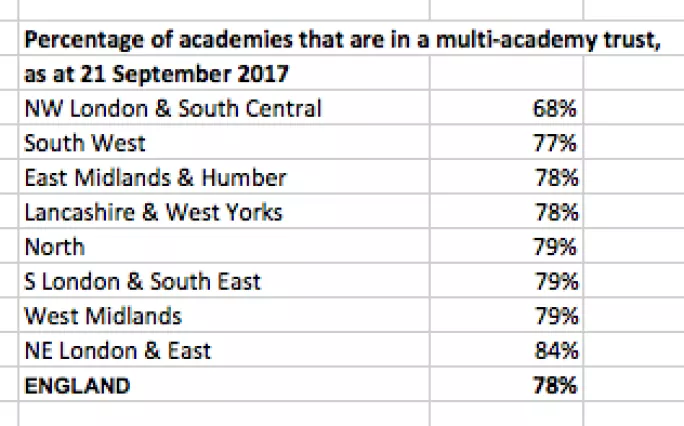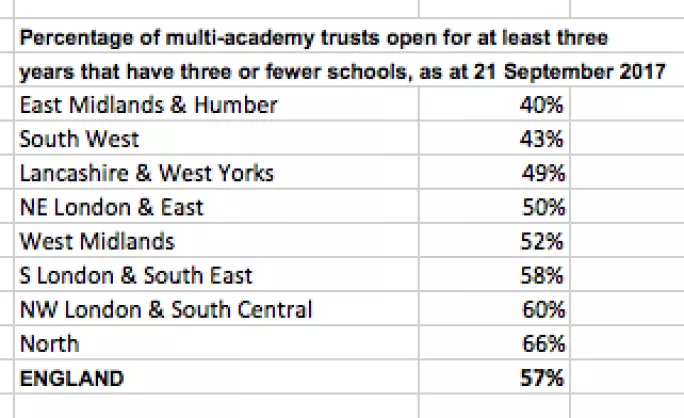An analysis of the academy system has revealed a postcode lottery across eight regions of England.
The data comes from a DfE analysis of the key performance indicators of its eight regional schools’ commissioners (RSCs), who oversee the academy system in their areas, for 2016-17.
In four of the nine tables below that examine the results or Ofsted grades of academies, the Lancashire and West Yorkshire region performs worst, or joint worst.
One-in-five inadequate academies in the region had that rating for more than 18 months. In contrast, the figure was zero in three regions.
Lancashire and West Yorkshire also had the highest proportion of academies that were below the government’s floor standard within three years of opening - 20 per cent -compared to 12 per cent in the north-west London and south central region.
The figures also point to variations in the time it takes to convert local authority maintained schools into academies.
For maintained schools that were judged inadequate after 18 April 2016 - when all such schools were legally required to become sponsored academies - 100 per cent in the South West were converted within nine months, compared to a low of two-thirds (67 per cent) in the West Midlands.
The KPIs also evaluate the “viability” of multi-academy trusts, asking how many that have been open for at least three years have three or fewer schools.
The figures range from a low of 40 per cent in the East Midlands and Humber region, to 66 per cent in the North.
A DfE spokesperson said: “We are always concerned about the variation of the quality of education provided for pupils across the country because we want every pupil, wherever they live and whatever background they are from, to have access to a great school.”
(In the tables below, references to “academies” encompass academies, free schools, UTCs and studio schools including 16-19 provision.)





